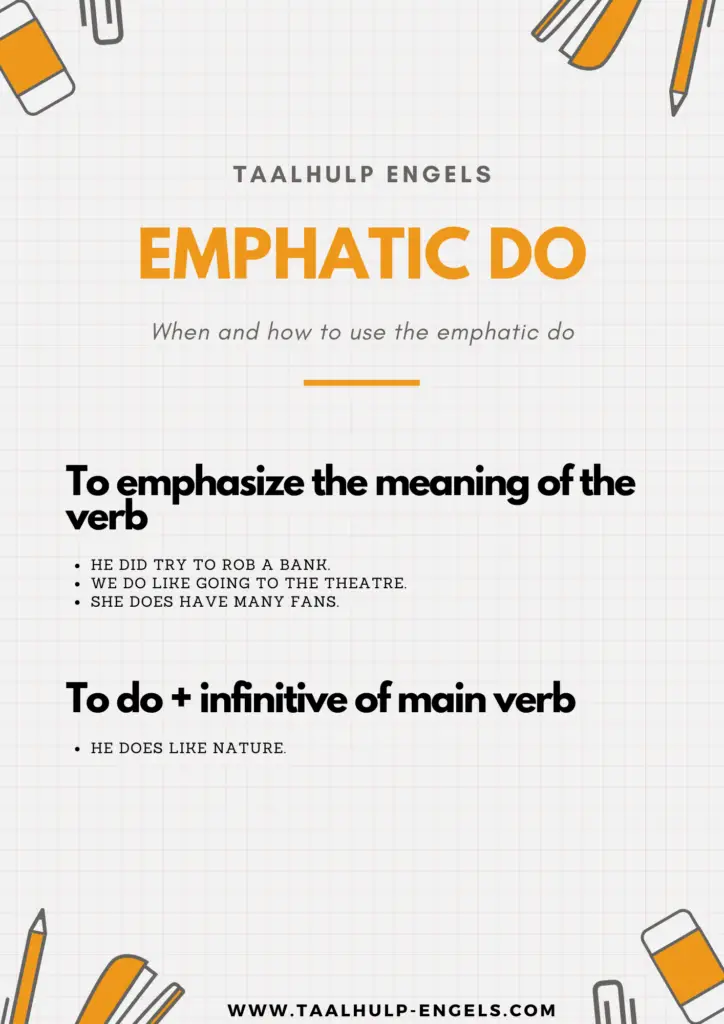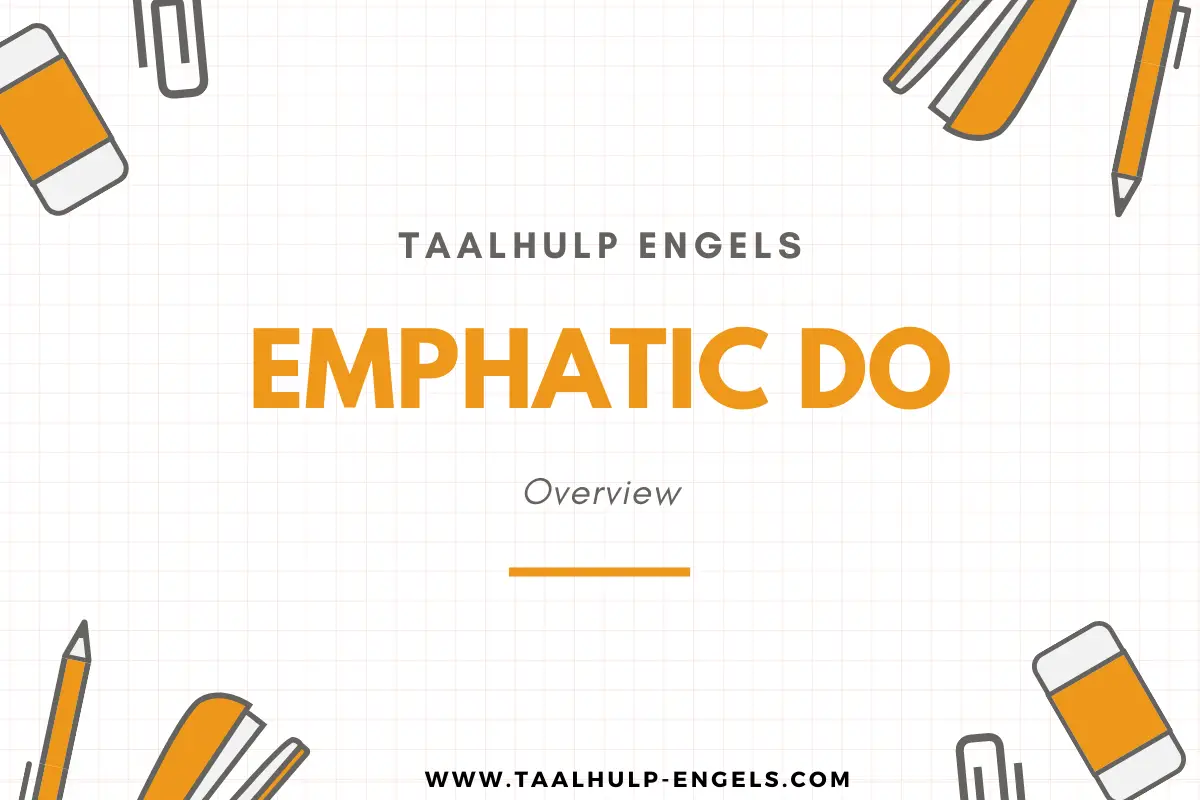When talking or writing English, you have the option to stress or contrast the main verb by using the auxiliary verb ‘to do’. This article discusses how to do this and there are also examples to make sure you know everything about the emphatic do in English. There is also a video available in the middle of this article. Take a look at the following example:
He does like nature.
What is the emphatic do?
The emphatic do is a grammatical structure in which you use ‘to do’ to stress or contrast the meaning of the main verb. You can add the verb ‘to do’ to almost every sentence in English. This emphasizes the main verb so the meaning becomes stronger. You can also use ‘to do’ to contrast the meaning of the main verb.
The main verb is the most important verb in a sentence. Using ‘to do’ puts more emphasis on the main verb and ‘to do’ becomes the auxiliary verb that supports the main verb.


How to form the emphatic do
Using ‘to do’ as an auxiliary verb is pretty straightforward. Make sure there is agreement between the subject and ‘to do’. Then you use the infinitive of the main verb because you should only conjugate one verb in the sentence/clause.
Keep in mind that ‘to do’ can be used both in the present and in the past. Take a look at the examples below.
Emphatic do overview
Emphatic do examples
He did try to rob a bank.
We do like going to the theatre.
She does have many fans.
I do want to have dinner soon.




